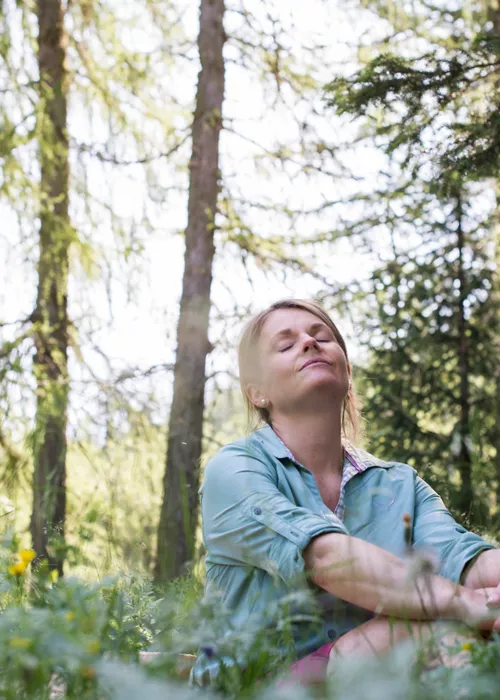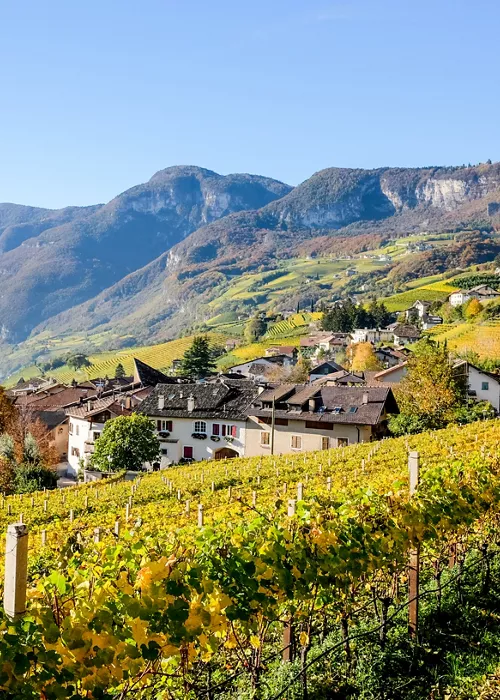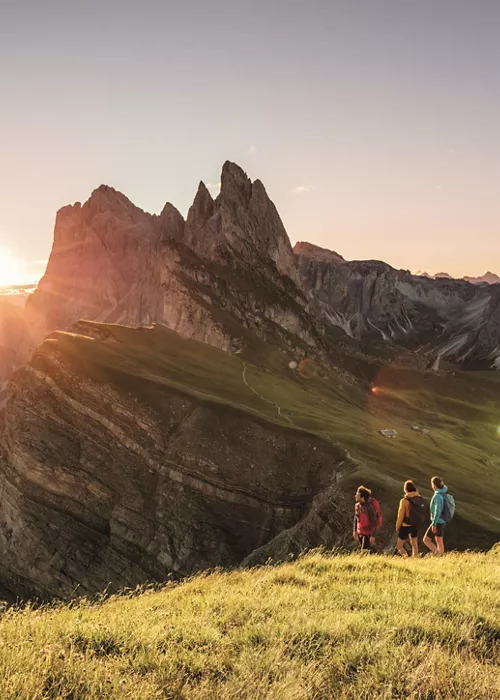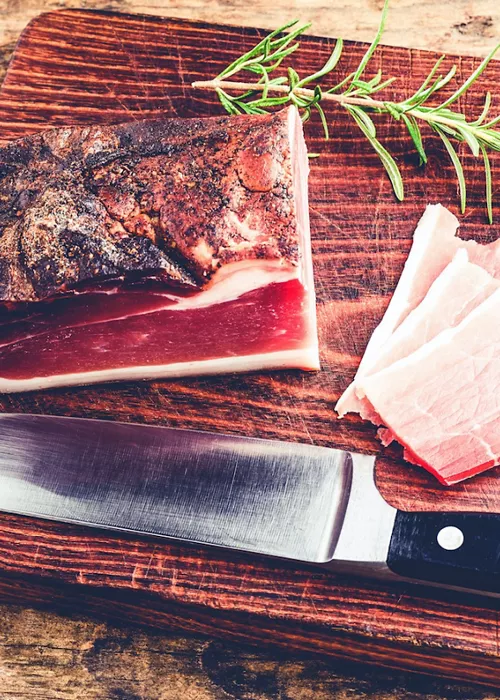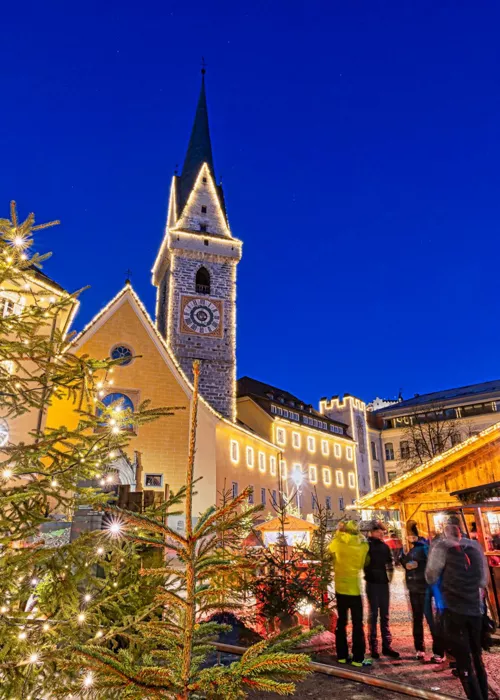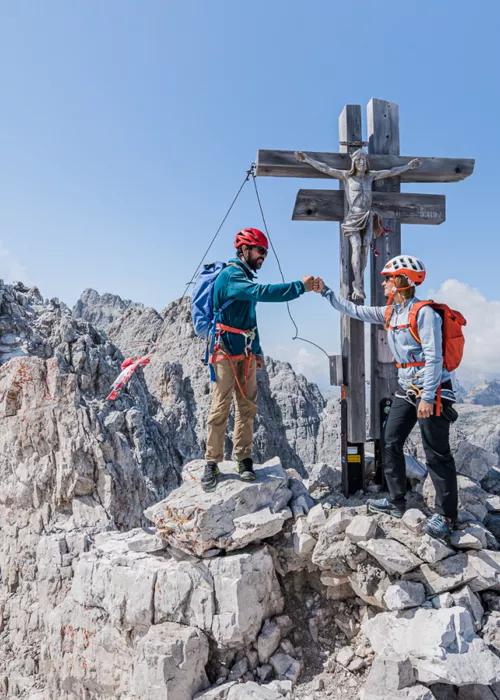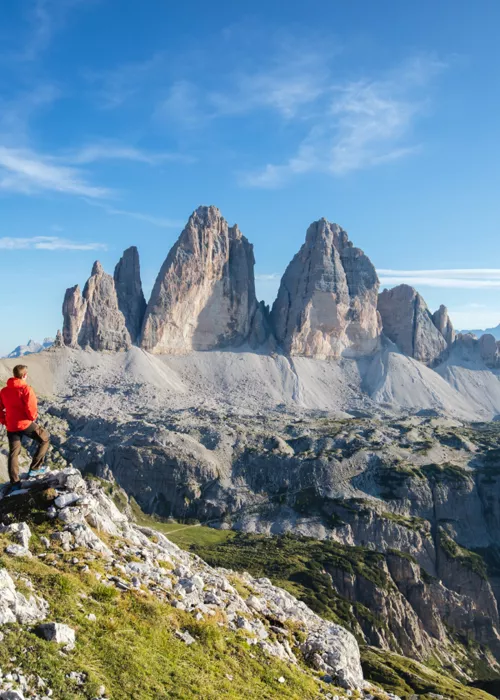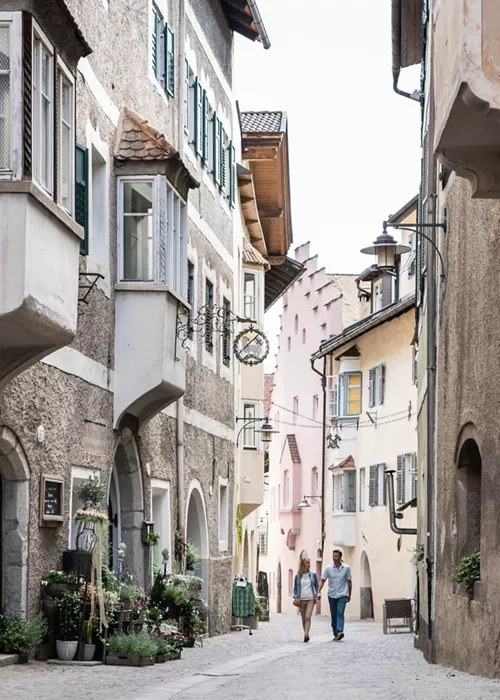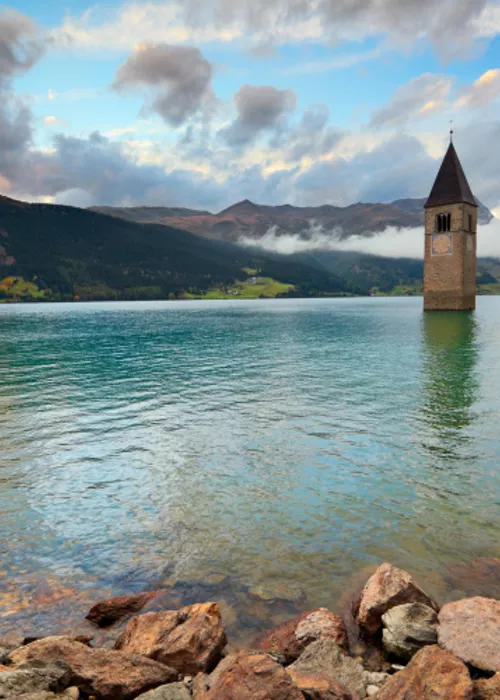Exploring 3 Val Venosta Villages in Alto Adige
9 minutes

Exploring the villages of Castelbello-Ciardes, Glorenza and Burgusio provides a wonderful introduction to Alto Adige’s Val Venosta. Filled with apple orchards and vineyards, this lovely valley is a great destination for food lovers and recreational travelers.
Castelbello-Ciardes (Kastelbell-Tschars)

We weren’t the first to discover the charms of Castebello-Ciardes. People have lived in this quaint Val Venosta village surrounded by the Alps for more than a thousand years.
Top 5 Things Not to Miss in Castelbello-Ciardes
- Val Venosta Wine Trail
- Val Venosta Wineries
- Castelbello Castle
- Michelin-Starred Meal
- Food/Wine to Taste: Freshly Picked Apples and Locally Produced Wine
We started our exploration of Castelbello-Ciardes by hitting the Val Venosta Wine Trail - a 9 kilometer (approximately 5 mile) trail that meanders up the valley's steep hills, next to ancient irrigation channels, vineyards and apple orchards. Motivated hikers can traverse the entire Castabello segment in just a few hours. We however got distracted by apples and wine which appeared all along the scenic trail during our leisurely hike.
These distractions started when we walked by an empty barn at Weingut Köfelgut and we were greeted by a distant voice asking, “Do you want to taste some wine?” It was the winery’s owner, Martin Pohl, appearing out of the darkness, and his query was rhetorical. Pohl then welcomed us into a rustic room before guiding us through a tasting of his comprehensive selection of local whites.
We enjoyed tasting his wine so much that we bought three bottles of the winery’s excellent Gewürztraminer, an impulsive purchase that unashamedly limited our ability to complete the entire walk. Later, while tasting world class Pinot Noir at nearby Marinus Hof, we discovered that the two vineyard owners are brothers. Wine is in their blood. We connected with both passionate winemakers. And, yes, we bought a bottle at Marinus Hof too.
Hiking for wine may be the best thing to do in Castelbello but it’s not the village’s only activity. Dating back to the 12th century, the Castello di Castelbello is an attraction that’s impossible to miss. It’s also easy to find. Directions to find the medieval castle are unnecessary for those who simply look up into the air. It’s literally perched just above the center of town.
Looming large above the village, Castebello Castle was previously inhabited by counts and lords over the centuries. Today, travelers who tour the castle from April through October can discover its hidden highlights and learn from its informative exhibitions. Though the castle was rebuilt in the 19th century after a fire destroyed the original structure, it remains the village’s key landmark and a civic source of pride.
While Castebello’s castle is impressive, this is a village where food travelers like us can enjoy the finer things in life. Accordingly, we dug deep into the village’s surprisingly diverse food scene during our multi-day visit. Despite its relatively small population, Castelbello-Ciardes’ food scene includes casual pizzerias and a Michelin-starred restaurant. Those with a car can also dine at nearby mountain chalets with majestic views of snow capped mountain prosceniums.
However, the best things we ate in Castelbello-Ciardes were apples that we plucked from trees and ate on the spot. Those sweet Val Venosta apples were free but our experience eating them was priceless.
Castelbello-Ciardes Useful Information
Best Time to Visit: Although Castelbello-Ciardes is a four-season destination, early autumn is optimal for those who like eating fresh apples and want to experience the wine harvest.
How to Get There: Castelbello-Ciardes is located 53 kilometers (approximately 33 miles) from Bolzano. Beyond driving, sustainable transportation options include taking a train or bus. However, having a car is the best option for those who want to explore beyond the village center.
Glorenza (Glurns)

The village of Glorenza achieved fame for being the smallest city in the Southern Alps. A stroll in this tiny walled city is like walking hundreds of years into the past.
Top 5 Things Not to Miss in Glorenza
- Ancient City Walls
- Arcades
- Italy’s First Whisky Distillery
- Palabirnenbrot (Bread Baked with Local Pears)
- Food to Taste: Local South Tyrol Cuisine
A drive into Glorenza (or Glurns as most locals call it) requires entry through a small one-lane arched tunnel. Emerging from the tunnel to see the ancient street in the shadow of the Alps is a wow moment. Once inside the city’s walls, visitors are transported hundreds of years back in time.
Glorenza, the smallest city in South Tyrol, has been recognized as one of the most beautiful villages of Italy (Borghi più Belli d'Italia) due to its beautiful archtiecture, rich history and preserved streets. The city’s tiny size has prompted people to say, "Our city is so small that we have to go to mass outside the walls." They’re not exaggerating. St. Pancras, the City’s church, sits majestically outside of the city’s wall.
Located at the northern end of the Val Venosta, just about a 30 minute drive from the Reschen pass, Glorenza was once a major thoroughfare for the salt trade. The city was so valuable that it was rebuilt with its current historic walls after it was destroyed in 1499.
Modern-day crowds flock to Glorenza to experience the walled city in all of its medieval glory. Many stroll through the city’s ancient arcades, buy souvenirs and eat gelato cones. Some even walk along Glorenza’s ancient city walls. However, savvy travelers who dig deeper find more to explore in Glorenza both in and out of its stone barriers.
During our visit, our top priority was to find and taste Palabirnenbrot, the city’s famous bread baked with locally grown Pala pears. Not only are these pears specific to Val Venosta, but there’s only one Glorenza bakery that bakes this sweet fruit-studded bread. After we found the bakery and tasted the bread, it was time for us to venture outside Glorenza’s historic walls for more exploration.
Walking just ten minutes took us to Puni, Italy’s first whisky distillery. Puni’s modern cube-like building designed by Werner Tscholl is a showstopper where visitors can taste the distillery’s broad range of whiskies. After tasting three different whiskies matured in a variety of casks, including one from Sicily, it was time to complete our third mission - lunch.
Weather permitting, most travelers opt to soak up the sun while eating local food at outdoor cafes located on Glorenza’s town square. Not for dainty diners, typical starters involve boards topped with speck and cheese and are followed by main dishes involving fluffy dumplings and fried veal cutlets.
In a nod to Italy, we skipped those local specialties and instead ordered pasta. But these pastas were different from pastas we’ve previously eaten in cities like Rome and Florence. Instead, we ate Hirtenmakkeroni, a local pasta dish made with meat ragu, vegetables and mushrooms, and Hirschragout mit Bandnudeln, tagliatelle dressed with deer ragout.
As we left Glorenza at dusk, we experienced a special moment as we wandered past the northern wall to photograph the St. Pancras church at sunset. Stumbling upon a quiet trail brought us past an empty farm field where we witnessed the sun’s last light on the church’s peaceful solace. The experience was magical.
Glorenza Useful Information
Best Time to Visit: Any time is a great time to visit Glorenza. However, winter is especially great for travelers who want to relax next to a fire while eating comfort foods like schnitzel and apple strudel.
How to Get There: Glorenza is located 85 kilometers (approximately 53 miles) from Bolzano. Beyond driving, sustainable transportation options include taking a combination of trains and buses. However, having a car is the best option for those who want to explore beyond the village center.
Burgusio (Burgeis)

A great base for adventure travelers who enjoy cycling, hiking and skiing in the Watles, Burgusio is a must-see destination beyond its outdoor activities. In particular, this village has one of the most important abbeys in the entire Alto Adige region.
Top 5 Things Not to Miss
- Marienberg Abbey
- Church of San Benedetto
- The Watles
- Cheese Dairy
- Food to Taste: Locally Produced Cheese
At 1,340 meters, the Marienberg Abbey stands high above Burgusio. As the highest altitude Benedictine abbey in all of Europe, it’s a draw for travelers interested in Italy’s rich religious history as well as for other travelers who appreciate great views. On a clear day, it’s possible to see the entire valley including a community village that’s centered around local farmers and citizens.
We made the abbey our first stop when we visited Burgusio in Alto Adige’s Val Venosta. After driving straight up a mountain, we started our day by touring the complex and learning about its centuries-long history that still continues today.
We weren’t alone since the Marienberg Abbey draws visitors from both near and far. Founded in the 12th century by the Tarasp family, the abbey’s rich history is filled with drama and intrigue. Audio guides tell stories about the religious order’s struggles over time as well as the various ‘tests of faith’ that the order endured to survive.
To be clear, this museum doesn’t just provide historical perspective in its informative displays and relics that span the centuries. It’s also a treasure trove of religious icons and art that complement the grandeur within the abbey’s refurbished church. We shared a few spiritual moments inside that church while we breathed in the magnificence of its 15th century Beautiful Madonna and impressive pipe organ. Not quite ready to leave, we climbed up a flight of stairs to share drinks at the abbey’s cafe before we continued our day.
Religious travelers can visit another historic church in Burgusio. The Church of San Benedetto, notable for its frescoes, dates back to the 11th century. This church is across the way from a working dairy located in the center of town.
At first glance, Burgusio’s dairy is a typical market that sells items like apples, speck and the best selection of chocolate Ritter bars we’ve encountered outside of Germany. However, a closer look revealed a deli counter filled with locally produced alpine cheeses. These aren't random blocks of cheese. Instead, they’re produced on-site using milk provided by local dairies including one that’s just a block from the market.
While we weren’t able to tour the dairy operations, we peeked through a window to watch the cheese production process. Before long, a friendly worker was looking back at us from the other side of the window. We shared a few smiles with him before we wandered to our last stop where we ended our day with glasses of local wine. As we crossed the street, we couldn’t help but hear the sound of moos emanating from an industrial building halfway up the street. Sure enough, this dairy milks cows right in the center of town. You can’t get more local than that.
On our way out of the village, the road curved past a group of mountains with the orange sunlight reflecting upon jagged bear-clawed escarpments. It was a show stopping sunset that made this village well worth the drive.
Burgusio Useful Information
Best Time to Visit: While hikers and history buffs can visit Bugusio any time of the year, skiers will want to plan their visit during the winter months.
How to Get There: Burgusio is located 90 kilometers (approximately 56 miles) from Bolzano. Beyond driving, sustainable transportation options include taking a bus with a connection in Glorenza. However, having a car is the best option for those who want to explore beyond the village center.




